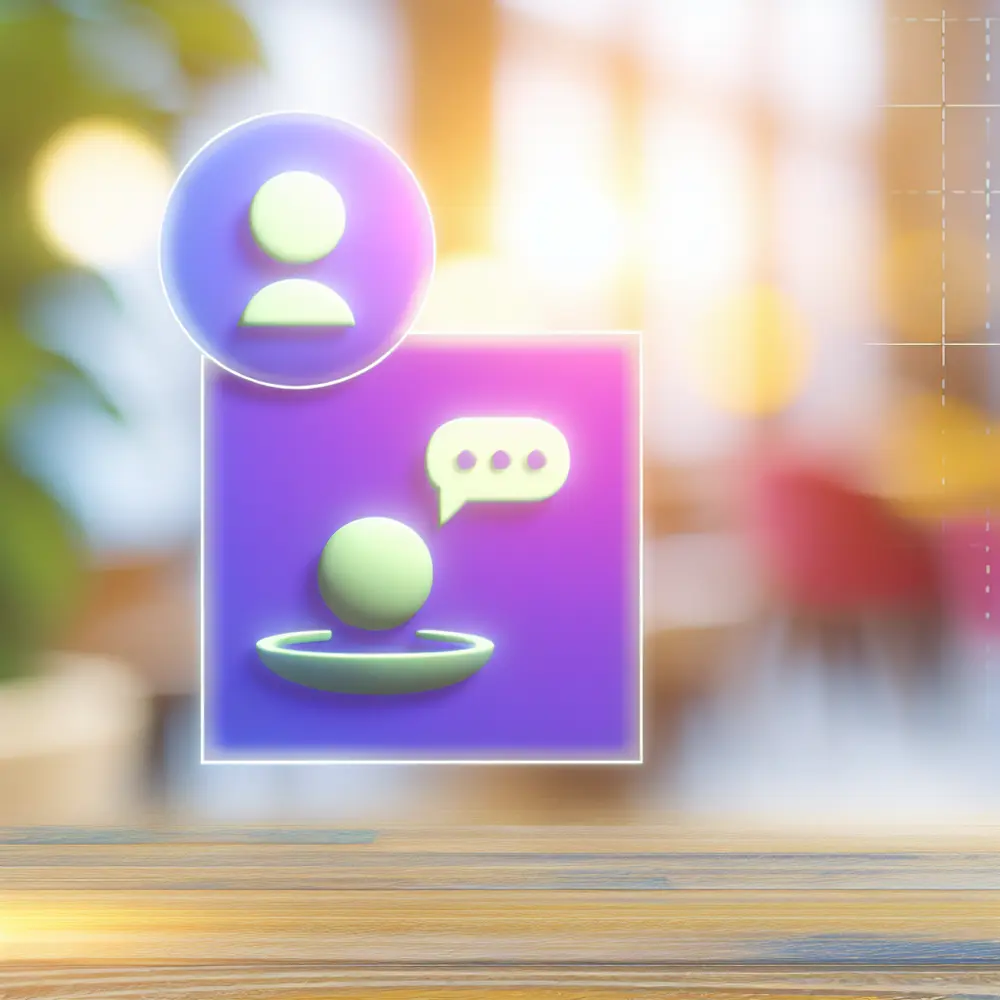In the fast-paced world of digital communication, businesses are increasingly looking for innovative ways to enhance interaction and streamline operations. One of the most significant advancements in this domain has been the adoption of chatbots, particularly on messaging platforms like WhatsApp. These automated software programs are designed to simulate human conversation by employing artificial intelligence (AI) and natural language processing (NLP). As we delve deeper into the world of chatbots, you’ll discover their myriad benefits and functionalities that can transform how small and medium businesses (SMBs) engage with their customers.
Chatbots serve as sophisticated solutions to a common problem—how to provide prompt and efficient customer service without overwhelming human agents. By deploying chatbots on messaging apps, businesses can maintain a 24/7 presence, answering inquiries outside standard working hours. This allows for seamless communication that enhances customer satisfaction and boosts productivity among teams. As we explore the various aspects of chatbot implementation, you will learn about the key considerations that can help you harness the full potential of this technology.
From understanding the core functions of chatbots to evaluating their costs and benefits, every business can find a compelling reason to embrace this technology. Whether it’s automating responses, optimizing marketing efforts, or improving customer interaction, chatbots can become invaluable assets in today’s digital landscape. By the end of this article, you will be equipped with the knowledge to implement or enhance a chatbot strategy that caters to your business’s unique needs and goals. Let’s dive into the transformative world of chatbots!
Understanding Chatbots and Their Functionality
Chatbots are automated software programs designed to simulate human conversation, primarily through messaging apps like WhatsApp. They leverage artificial intelligence (AI) and natural language processing (NLP) to interpret user inquiries and respond accordingly. By providing immediate responses to customer inquiries and performing routine tasks, chatbots can significantly enhance communication efficiency, reduce operational costs, and improve customer satisfaction for small and medium businesses (SMBs).
The primary function of chatbots is to facilitate interaction between users and businesses without the necessity of human intervention. When integrated into platforms such as WhatsApp, chatbots can address a multitude of queries simultaneously, handle basic transactions, and capture lead information. Such functionality allows businesses to maintain a 24/7 presence, ensuring customer questions are answered at all times, even outside standard business hours. As a result, chatbots not only streamline communication but also boost productivity within marketing and sales teams.
Setting up a chatbot requires careful planning and consideration of the business’s specific needs. Organizations must identify common customer queries that can be automated, thus defining the chatbot’s scope and capabilities. A well-designed chatbot will offer users a seamless experience, guiding them through interactions while being able to provide relevant information quickly. Additionally, businesses can use analytics to monitor chatbot performance and make adjustments based on customer feedback or changing trends in inquiries, further optimizing user experience.
In summary, understanding how chatbots function and their myriad benefits can empower SMBs and marketing professionals to enhance their operational models. By implementing chatbots on messaging platforms such as WhatsApp, businesses can not only improve their customer service but also boost engagement and sales through timely and relevant interactions. This comprehensive approach ensures that chatbots become an invaluable asset in navigating the evolving landscape of customer communication.
The Importance of Chatbots in Modern Business
Chatbots have emerged as a vital tool in the landscape of messaging applications, particularly within platforms like WhatsApp, where direct and instant communication is paramount. For small and medium businesses, integrating a chatbot into their WhatsApp strategy can transform customer interactions, streamline operations, and enhance overall service quality. By leveraging automated responses, businesses can quickly address inquiries, provide information, and facilitate transactions, ultimately improving customer satisfaction and engagement.
The allure of utilizing chatbots in messaging apps lies in their ability to provide 24/7 support. Customers today expect instant responses, and having a chatbot ensures that their queries are met regardless of time zones or business hours. This constant availability can help businesses capture leads, resolve issues promptly, and nurture customer relationships without the constant need for human intervention. Furthermore, chatbots can handle multiple conversations simultaneously, eliminating the bottlenecks often associated with traditional customer service methods.
In addition to supporting customer service functions, chatbots can play a substantial role in marketing and sales strategies. They can engage users through personalized messaging and recommend products based on customer behavior and preferences. This capability opens up new avenues for upselling and cross-selling, as chatbots can analyze data to suggest complementary items or services during a conversation. By implementing targeted campaigns through WhatsApp chatbots, businesses can significantly enhance their conversion rates and ROI, making the investment in this technology worthwhile.
Moreover, the integration of chatbots with CRM systems allows businesses to build more comprehensive profiles of their customers. By accessing purchase history and interaction logs, chatbots can provide tailored responses that resonate with the user, enhancing the customer journey and fostering loyalty. This data-driven approach to customer interaction not only helps in providing better service but also empowers businesses to make informed decisions based on analytics. As messaging apps continue to thrive, embracing chatbot technology on platforms like WhatsApp is no longer an option but a necessity for businesses aiming to remain competitive in a fast-paced digital marketplace.
Factors Influencing Chatbot Development Costs
The cost of developing a chatbot for WhatsApp can vary significantly based on several key factors. Understanding these factors is essential for small and medium businesses (SMBs) and marketing and sales professionals looking to harness the power of chatbots to improve customer engagement and streamline operations. One of the primary determinants of price is the complexity of the chatbot itself. Basic chatbots, which can handle simple queries and tasks using pre-defined responses, typically cost less than more advanced chatbots that utilize artificial intelligence (AI) and natural language processing (NLP) to understand and respond to user inputs more effectively.
Another significant factor affecting the pricing is the level of customization required. Off-the-shelf chatbot solutions are generally more affordable, but may not suit specific business needs. In contrast, custom-built chatbots, tailored to align with unique business processes and customer interactions, can be substantially more expensive. Additionally, the choice between a DIY (do-it-yourself) chatbot platform and hiring a developer or agency to create the chatbot can greatly influence the overall cost. While DIY platforms often come with monthly fees or one-time charges, engaging professionals can lead to higher initial investments but potentially offer better functionality and integration capabilities.
Integration capabilities also play a crucial role in the pricing structure. A chatbot that integrates seamlessly with existing customer relationship management (CRM) systems, e-commerce solutions, or databases may incur additional costs due to the complexity of these integrations. Businesses must factor in ongoing maintenance and updating costs as well, as maintaining a chatbot to ensure it remains efficient and effective requires continuous investment in terms of both money and resources.
Lastly, the volume of interactions and user traffic the chatbot is expected to handle can significantly influence costs. Businesses anticipating a large or rapidly growing user base may need to invest in higher-tier solutions that can scale effectively. These solutions may also come with higher service fees or payment structures based on usage. By carefully considering these key factors, SMBs can better estimate the costs associated with implementing a WhatsApp chatbot, ensuring they make informed decisions that align with their strategic goals.
DIY vs. Professional Chatbot Development
When considering the development of a chatbot for WhatsApp, businesses often face the choice between a do-it-yourself (DIY) approach or opting for professional development services. Both paths present unique advantages and drawbacks, making it essential to evaluate your company’s needs, budget, and technical capabilities.
The DIY method allows businesses to have greater control over the design and functionality of their chatbot. With various online platforms and templates available, small and medium businesses can create basic chatbots without extensive technical skills. These platforms often provide intuitive drag-and-drop features, enabling users to build chatbots that suit their specific requirements. While DIY solutions may be cost-effective in the short term, they can require a significant investment of time and effort to customize and maintain. Furthermore, if your chatbot’s functionality is limited, it may not provide a seamless experience for users, potentially reflecting poorly on your brand.
On the other hand, engaging with professional developers offers expertise that can significantly enhance the chatbot’s capabilities. Professional services can provide tailored solutions that are intricately designed around your business objectives. The development process typically includes thorough planning, advanced integration capabilities with existing systems, and ongoing support for updates and troubleshooting. This can result in a more sophisticated and responsive chatbot, capable of handling complex queries and providing an enriched user experience. However, the perception of using a professional service often comes with higher initial costs, which may be daunting for some small businesses.
Ultimately, the decision hinges on your business’s specific needs and available resources. If your goal is to have a simple chatbot that can handle basic customer inquiries, a DIY approach might be the best fit. However, if you require advanced capabilities, personalized interactions, and a professional appearance, investing in professional chatbot development could yield better returns in customer satisfaction and engagement. Weighing these options carefully will help ensure that your investment in a WhatsApp chatbot aligns with your overall business strategy and objectives.
Real-World Examples of Successful Chatbot Implementation
Successful implementation of chatbots on WhatsApp has transformed customer engagement for many small and medium businesses (SMBs), offering a compelling case for others to follow suit. One notable example is a retail clothing brand that integrated a chatbot into its WhatsApp channel. By automating customer inquiries and order tracking, the brand reduced response time significantly, leading to a 40% increase in customer satisfaction. The chatbot efficiently handled common questions, freeing up human agents to focus on complex issues, ultimately leading to better service and increased sales during peak shopping seasons.
Another compelling case comes from a local restaurant that employed a chatbot to manage reservations and answer menu inquiries. This implementation not only streamlined the reservation process but also enhanced customer experience by providing real-time updates and personalized recommendations based on previous visits. The restaurant reported a 30% increase in reservations through WhatsApp, showcasing how a well-designed chatbot can directly contribute to revenue growth. Moreover, customers appreciated the convenience of booking via their preferred messaging app, solidifying the restaurant’s relationship with its clientele.
In the healthcare sector, a small clinic adopted a WhatsApp chatbot to manage appointment scheduling and patient follow-ups. The chatbot provided patients with immediate access to information, reducing the administrative burden on staff and minimizing wait times for patients. As a result, the clinic saw a 25% decrease in no-show rates, as patients could easily reschedule missed appointments via the chatbot. This case highlights how chatbots can effectively improve operational efficiency while enhancing the patient experience.
Lastly, an e-commerce business leveraged a WhatsApp chatbot to handle post-purchase support. By automatically sending out shipping updates and personalized thank-you messages, the business increased customer retention rates by 15%. This not only improved customer loyalty but also prompted positive word-of-mouth referrals. These cases collectively illustrate that investing in a chatbot for WhatsApp isn’t just a trend; it is a strategic move that SMBs can make to enhance customer service, streamline operations, and drive sales in an increasingly digital marketplace.
Choosing the Right Chatbot for Your Business
Choosing the right chatbot for your business can be a game-changer in enhancing customer interaction and streamlining operations. The first step in this process is to understand your specific needs. Begin by evaluating the objectives behind integrating a chatbot. Do you aim to automate customer service, facilitate sales inquiries, or enhance user engagement? By clearly defining your goals, you can better assess which features and functionalities are essential, setting the stage for your chatbot decision-making process.
Once your objectives are set, it’s crucial to explore the various chatbot options available in the market. There are different types of chatbots, including rule-based and AI-powered bots, each designed for different purposes. Rule-based chatbots follow predefined scripts, making them suitable for straightforward queries, while AI-powered chatbots use machine learning to understand user intent and provide more personalized responses. Consider your budget, as pricing models can vary significantly based on the complexity and capabilities of the chatbot. Many providers offer tiered pricing structures, giving you the flexibility to choose an option that aligns with your financial capacity.
Integration capabilities should also be a primary consideration when selecting a chatbot. Ensure that the chatbot can seamlessly integrate with your existing systems, such as CRM, email marketing platforms, and social media channels. This will help in creating a streamlined workflow and enriching the customer experience by maintaining continuity across different platforms. Additionally, examine the chatbot’s analytics and reporting features. Effective chatbots provide insights into user interactions, allowing you to measure their performance and make informed decisions to optimize communication strategies.
Lastly, don’t overlook the importance of user experience. Choose a chatbot that can provide a natural conversation flow to engage users effectively. The tone and personality of the bot should reflect your brand identity and resonate with your target audience. Testing the chatbot before full implementation can also help to identify any challenges and necessary adjustments. Investing time in these considerations ensures that the chosen chatbot not only meets your business needs but also contributes significantly to customer satisfaction and engagement.
Challenges in Implementing Chatbots and Their Solutions
Implementing chatbots for WhatsApp can offer numerous benefits for small and medium businesses, including streamlined communication and improved customer service. However, several common challenges can arise during the implementation process. Understanding these challenges and their solutions is essential for a successful integration.
One significant challenge is ensuring that the chatbot can effectively understand and respond to user inquiries. Natural language processing (NLP) capabilities are crucial for a chatbot to interact meaningfully with customers. Without advanced NLP, chatbots may struggle to comprehend various dialects, colloquialisms, or complex queries. To address this, businesses should invest in quality NLP tools and develop a comprehensive training dataset that includes potential customer interactions, which will enhance the chatbot’s ability to provide accurate responses.
Another hurdle is integration with existing systems and workflows. Businesses may already have customer relationship management (CRM) tools or other software in place that need seamless connectivity with the chatbot. If not properly integrated, the chatbot can lead to inconsistencies in data handling and customer service. Thus, it’s vital to choose a chatbot platform that supports integration with popular CRMs and offers APIs for smooth implementation. Furthermore, involving IT teams during the setup can help streamline the process and reduce friction between systems.
User adoption is yet another common challenge. Customers may be hesitant to engage with a chatbot if they prefer human interaction. This can be mitigated through proactive education about chatbot capabilities and benefits, making users comfortable with the technology. Marketing campaigns highlighting chatbot features, such as 24/7 availability and faster response times, can significantly improve user acceptance. Additionally, ensuring that customers know they can easily connect with a live agent if needed helps to build trust.
Lastly, ongoing maintenance is often overlooked. Chatbots require regular updates to their knowledge base and performance tuning to ensure they continue to meet evolving customer needs. Scheduling routine evaluations and updates is crucial. Companies should also gather user feedback to identify areas for improvement and implement necessary adjustments promptly. By addressing these challenges with strategic solutions, businesses can maximize the potential of chatbots in enhancing their customer service and driving engagement.
The Evolving Role of Chatbots in Marketing and Sales
The role of chatbots in marketing and sales is rapidly evolving, transforming the way businesses engage with their customers. As small and medium enterprises (SMEs) increasingly adopt messaging apps for customer interactions, chatbots have emerged as essential tools for enhancing communication and driving sales. With user expectations shifting towards more immediate and personalized service, chatbots are positioned to play a pivotal role in meeting these demands efficiently.
One of the most significant trends is the integration of artificial intelligence and machine learning into chatbots. This advancement allows for more sophisticated interactions where bots can understand context, interpret customer sentiment, and provide tailored responses. For SMEs, this means a significantly improved customer experience that can lead to higher satisfaction rates and increased loyalty. As chatbots become smarter, they can also analyze customer data to deliver personalized marketing messages, driving conversion rates and boosting sales figures.
Another important trend is the omnichannel capability of chatbots, enabling businesses to maintain seamless communication across various platforms. Today, customers may initiate conversations via social media, websites, or messaging apps like WhatsApp. By using chatbots that can integrate these multiple channels, businesses can provide continuity in customer interactions, regardless of where the conversation begins. This level of interconnectedness not only streamlines operations but also enhances brand consistency and trustworthiness, crucial elements for successful marketing strategies.
Moreover, the future of chatbots in marketing and sales looks promising with the expansion of voice-activated interfaces and conversational commerce. As technology advances, chatbots will increasingly handle complex transactions directly within messaging apps and voice platforms. This shift will allow consumers to complete purchases, inquire about products, and receive post-sales support without leaving their preferred communication channel. SMEs that embrace these capabilities will be well-positioned to capitalize on new market trends and customer preferences, driving significant growth in an ever-competitive landscape.
Conclusion
Investing in a chatbot for WhatsApp can be a transformative decision for small and medium businesses looking to enhance customer engagement and streamline operations. As we have explored throughout this guide, the cost of implementing a chatbot can vary significantly based on several factors, including features, customization, and the complexity of the integration process. By understanding these variables, businesses can make informed choices tailored to their specific needs and budgetary constraints.
A core consideration when evaluating chatbots is the balance between cost and functionality. While a lower-priced solution might appear attractive initially, it’s crucial to assess whether it provides the necessary features to meet your goals. Many businesses find that investing in a more robust chatbot, with capabilities such as advanced AI algorithms, natural language processing, and integration with other business systems, can yield higher returns in terms of customer satisfaction and operational efficiency. Additionally, consider the possibility of ongoing costs such as maintenance, updates, and subscription fees, which can also affect your overall investment.
Another significant aspect of deciding on a chatbot implementation is the potential for increased sales and marketing efficiency. By utilizing a messaging app like WhatsApp, your chatbot can reach customers directly in a space where they are already engaged. This can lead to improved conversion rates through personalized interactions and timely responses. Integrating your chatbot with existing marketing campaigns and customer relationship management systems ensures that your investment transcends mere automation and drives meaningful engagement, ultimately resulting in a solid ROI.
In conclusion, a well-planned chatbot investment requires thorough research and consideration of both current and future business needs. Small and medium enterprises can benefit from a comprehensive understanding of available options, ensuring the selected chatbot aligns with their customer engagement strategy. By evaluating the comprehensive features that cater specifically to your clientele, you position your business to leverage the full potential of chatbots in enhancing service quality and fostering growth in a competitive market. The CRM a comprehensive tool for managing such interactions can further amplify your efforts in this digital transition.









